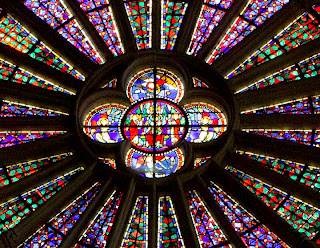When I have paid a museum fee to view historical artifacts, no matter how attractively set up, I do not fully appreciate the work. To comprehend a piece of art, I have to consider the composition at the original site. Without this opportunity, I miss the artist’s deliberation of place; the forethought of how to convey the message using individual technique, stylized details, in order to triumph in a unique space is conspiciously missing.
Take for example, the work of a twelfth century itinerant sculptor known in France as the “Master of Cabestany”. (The actual name of this artist has not been recorded but in the Languedoc region he is revered as a genius of masonry.)
 |
| http://www.theworldinlight.com/ This photo was taken standing outside zooming in on the detail in the magnificent setting intended for the art to be displayed. |
 |
| http://www.theworldinlight.com/ |
After examining one of his masterpieces in an artificial setting, I left feeling uninspired. But, for me, beholding his large-handed, bulbous-eyed figures in the recesses under the roofline of the curved nave of St-Papoul’s Abbey was dramatic. The idea that many works of art have become the spoils of war and later show up in a museum half-way around the world evoke the idea within me that the essence of the piece was destroyed … I leave such displays feeling deflated.
(Note: An exception to this statement may be paintings … viewing them with the proper lighting and proxixmity does evoke my imagination. After all, they were most often created on a canvas without the benefit of knowing where the picture will be displayed.)









